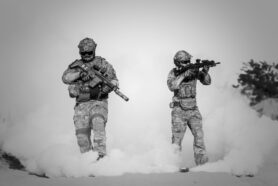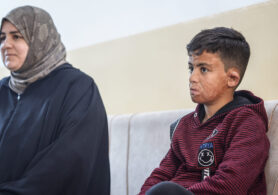This discourse never asks: What is the root cause of this violence? Will it produce more violence in the future? Are there alternatives? Instead, debate focuses around a more narrow set of issues: Has the US acknowl- edged the number of its civilian victims? Did a strike achieve goals in ‘proportionality’? Were enough precautions taken?
Bonds, E. (2019). Humanitized violence: Targeted killings and civilian deaths in the US war against the Islamic State. Current Sociology, 67(3), 438–455.
Modern weapons technology has enabled air strikes to be more precisely targeted than ever before. In theory, this should minimise civilian harm and ensure greater adherence to the principals of distinction and proportionality underpinning Just War. As Eric Bonds explains in Humanitized violence, however, precision weaponry and the accompanying technical and administrative procedures designed to limit civilian casualties in modern warfare have effectively reinforced the logic of violence. By framing remote warfare in legal terms and couching it in the language of precision and care, the boundaries of debate within which NGOs can scrutinise warfare are limited to ensuring violence is ‘humanitized’ and evaluated on a technical rather than political basis. Distinct from both the brutal ‘ferocious violence’ and the bureaucratic ‘callous violence’ of previous wars, Bonds’ concept of ‘humanitised violence’ is reinforced rather than opposed by human rights and humanitarian organisations.
Source:



